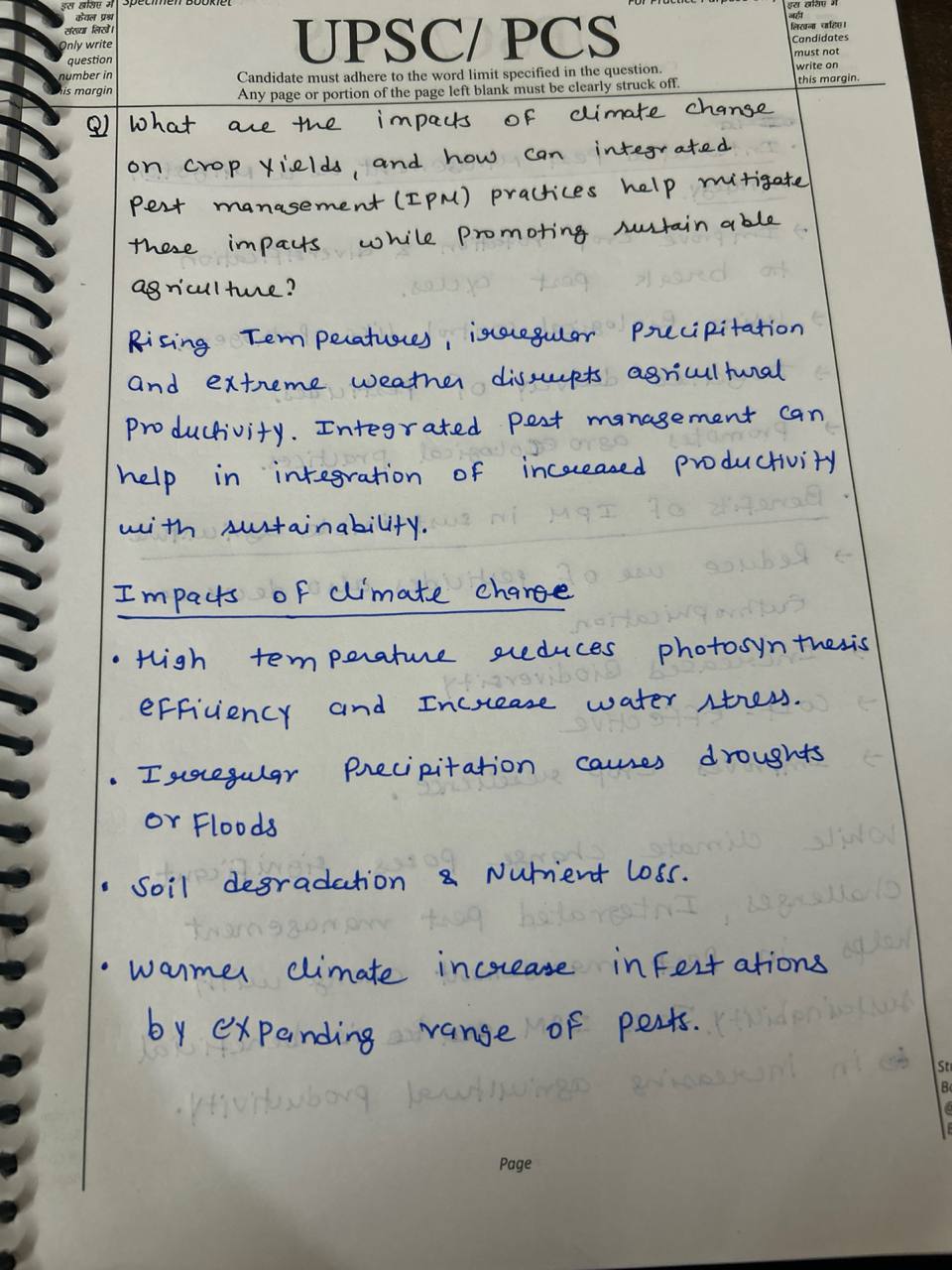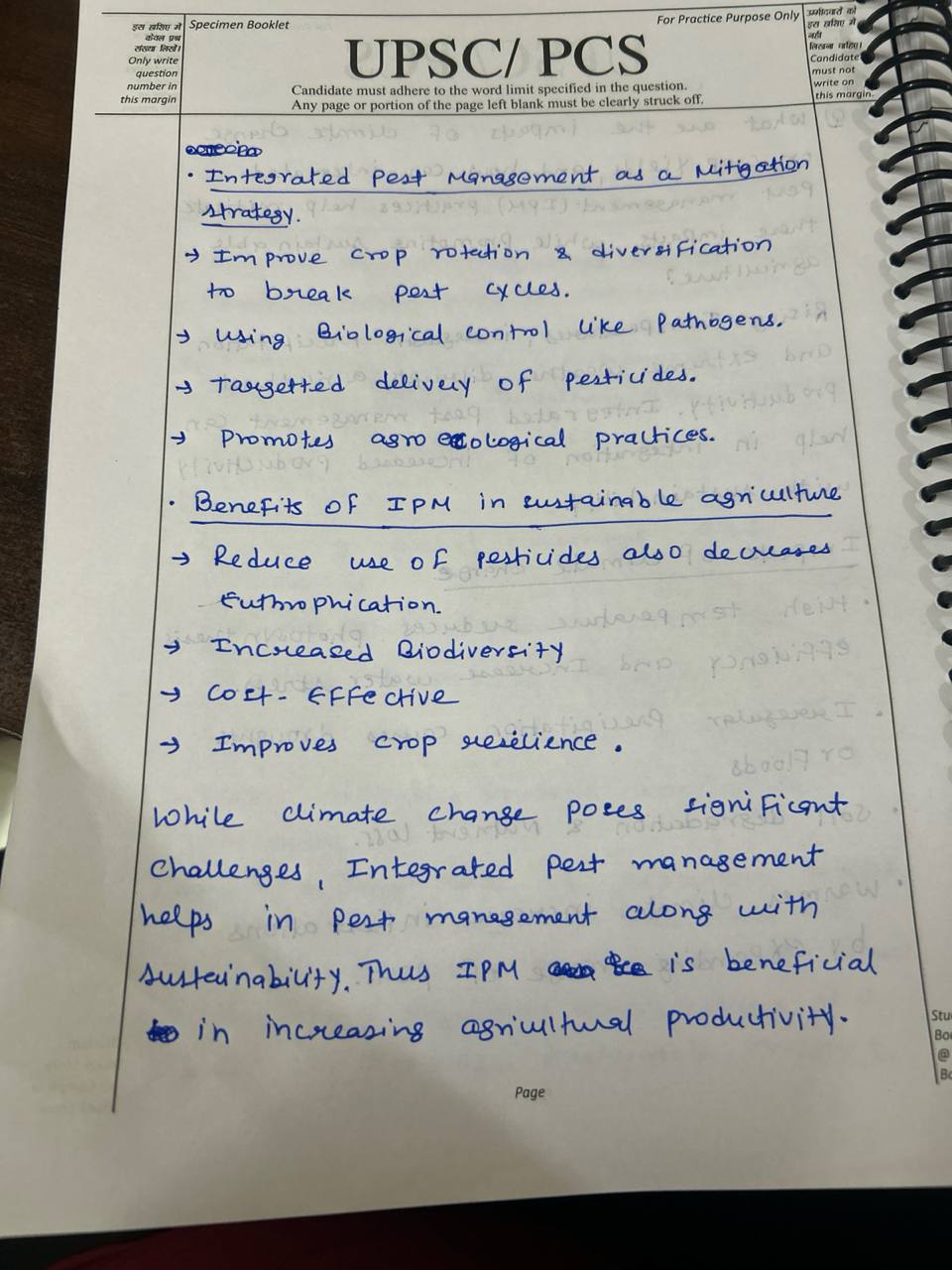1. Sustainable Agreements regarding Climate. Promote and produce varieties of drought- and heat-resistant crops. For more effective soil health and water preservation, implement crop rotation, cover cropping, and no-till agriculture. To cut water usage and enhance effectiveness of available water, aRead more
1. Sustainable Agreements regarding Climate.
Promote and produce varieties of drought- and heat-resistant crops.
For more effective soil health and water preservation, implement crop rotation, cover cropping, and no-till agriculture.
To cut water usage and enhance effectiveness of available water, apply precise agriculture and use drippers.
2. sustainable energy systems: thats
Renewable energy supply: A change in renewable energy supply helps to reduce reliance on fossil fuels as a food production source by means of wind mills and solar panels.
Energy efficient methods: Process, transportation, and storage energy use efficiency to ultimately lower total food consumption in the network.
3. Eating modifications
Shift to plant-based, non-animal dietary: Plant-base diets have even less environmental damage than meat-centred food supplies.
There is no food wasted anywhere in the chain. Bring food waste down from production to consumption.
4. Innovations and technology:
Precision agriculture means using existing technologies like GPS, drones, and sensors wisely to ensure resource inputs are correct; monitor crop health; and relevant data can be generated.
Conduct studies to produce new technology including gene editing so that more resilient crops are grown using biotechnology.
5. Policy and Government:
Encouragement of sustainable agricultural methods including organic farming subsidies and research and development expenditures should be legislated to support sustainable agriculture.
Setting up carbon price systems would help to accelerate the acceptance of low-carbon farming.
International cooperation can be enhanced about food security, mitigation of climate change, and sustainable development.
6. Involvement with the Community.
Empower local people: Communities ought to have the ability to choose their food system.
Support the local food system: since they rely on regional rather than far-away transportation, local food systems and regional food systems less promote food independence.



Few organisms find it easy to grow in other planetary climatic regions. Technology, however, has developed solutions that are new and innovative: Controlled Environment Agriculture (CEA): Greenhouses: Modern greenhouses have incorporated sophisticated means of climate control, integrated and automatRead more
Few organisms find it easy to grow in other planetary climatic regions. Technology, however, has developed solutions that are new and innovative:
Controlled Environment Agriculture (CEA):
Greenhouses: Modern greenhouses have incorporated sophisticated means of climate control, integrated and automatic watering systems, and LED supplemental lighting, regardless of the weather outside.
Vertical Farming: This technique involves use of the available space in that the plants are planted in what may be referred to as tiers. It sometimes employs goggled conditions involving hydro or aeroponic systems, which returns little reliance on soil in managing resource exploitation.
Biotechnology:
Genetic Engineering: Through biotechnology scientists are able to apply for instance change ability in the plants in order to increase their ability to withstand temperatures change, drought, high salinity and other stressful conditions. This includes the process of trans placing genes from other organisms, which have such characteristics as desired.
Tissue Culture: By using this method the number of plants with such desirable traits, including disease or stress tolerance can be easily multiplied.
Precision Agriculture:
Sensors and Monitoring: Sophisticated transducers and data acquisition instruments can measure environmental factors, plant status, and resources on as-needed basis. Any such data may be used to enhance the efficiency of irrigation, fertilizing and other practices of crop management.
-Drones and Remote Sensing: To identify stressed areas and enhance the usage of resources, large commercial farm models would be useful to view from aerials and satellites.
Water Management Technologies:
Water-Hardiness Crops: The ability to produce a plant type that is drought-resistant is the first success towards gardening in areas that have limited water supply.
-Efficient Irrigation Systems: Sprinkle irrigation and drip irrigation and micro irrigation are water saving irrigation techniques since water is supplied directly to the root area of the plants.
See less